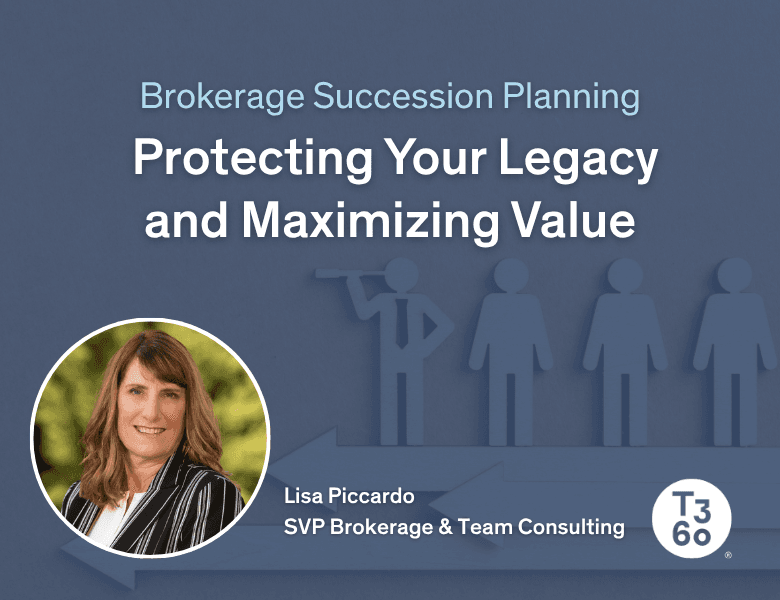Brokerage Succession Planning: Protecting Your Legacy and Maximizing Value

At T3 Sixty, we’ve seen a marked increase of brokerage owners and leadership teams reaching out for assistance in preparing an exit strategy. This surge reflects a growing awareness across the industry: succession planning is no longer a distant conversation — it's a present-day business imperative. Whether you're years away from stepping aside or simply looking to safeguard your business’s future, a well-crafted succession plan ensures stability, growth and continuity.
Start with Strategic Intent
Begin by clarifying your long-term goals: Do you want to exit completely or just move away from leading the company? Do you envision a family transition or an internal leadership handoff? Or perhaps an eventual sale or merger? Defining your desired outcome and timeline upfront provides the direction for every decision that follows.
Assess and Develop Your Leadership Bench
Effective succession planning starts with an assessment of your current leadership team. Identify who has the potential to step into key roles and where additional development is needed. Invest in leadership development by providing coaching, mentorship, stretch assignments and clear performance expectations. By proactively building a strong pipeline of future leaders, you ensure your brokerage is always prepared for leadership transitions — whether planned or unexpected.
Know Your Brokerage's Value
Understanding your brokerage’s market value is essential. Have a third party conduct a valuation to assess factors like profitability, agent retention, operational systems and brand strength. This valuation also informs estate planning, tax strategy, and any future exit negotiations.
Evaluate Your Transition Options
Once you have a clear understanding of your brokerage’s value, the next step is to determine the best path forward. Do you want to sell the company outright to an internal leader or an external buyer? Would merging with another firm create new growth opportunities and add stability? Evaluating these options carefully — in consultation with trusted advisors — will help ensure that your transition strategy aligns with both your personal goals and the long-term success of the business.
Create a Transition Roadmap
With your successor identified and development underway, build a phased transition plan. Establish timelines, define responsibilities and maintain open communication with staff, agents and stakeholders to ensure a smooth handoff.
Review and Adapt Over Time
Succession planning is not static. Review your plan regularly, adjusting as market conditions, personal goals or leadership talent evolve. Businesses that remain “exit-ready” at all times are better positioned for both planned and unexpected transitions.
The Bottom Line
Succession planning isn’t simply about stepping away — it’s about protecting the great company you’ve worked so hard to build and ensuring your agents, staff and clients continue to be supported and successful under strong leadership. With a clear plan, intentional leadership development, and ongoing evaluation, brokerage owners can have confidence that their business will thrive for years to come, preserving both their legacy and the people who helped build it.
With a thoughtful plan in place, you can confidently preserve your legacy and ensure the continued success of your brokerage for years to come.
If you’d like to discuss how T3 Sixty can support you in building or refining your succession plan, we’re here to help.